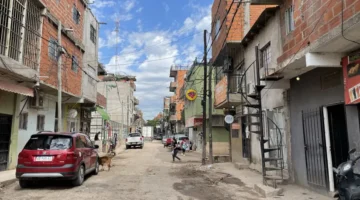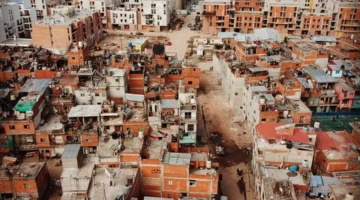


Villa 20 urbanization
Main objectives of the project
The city of Buenos Aires has witnessed a rise in population within informal settlements, with over 300,000 people, constituting 10% of the city's population, residing in such areas. Focused on enhancing the lives of slum dwellers in Villa 20, located in the Lugano district, this initiative prioritizes participatory engagement with the community. Its core objectives include providing affordable housing solutions and preventing evictions.
Date
- 2015: Implementation
Stakeholders
- Buenos Aires (Gobierno Ciudad Aitónoma)
- Promotor: Instituto de Vivienda de la Ciudad (IVC)
- Coaliciones Urbanas Transformadoras
Location
City: Buenos Aires
Country/Region: Argentina, Buenos Aires
Description
Villa 20 is an informal settlement that begin in 1948. With the first Peronist government, in the surroundings social housing was built. This started an informal urbanization of the area. In the 70s, the military dictatorship tried to straighten out the neighborhood. Yet, people rebuilt it and, today, nearly 30.000 people live there. The vast majority are tenants and young people.
In some situations the solution to informal settlements in process of reurbanization are to live behind the old buildings and destroy the area in order to, then, rebuilt it, there was a need to a new approach. The neighborhood was in dire need of intervention. Thus, rather than a public-led initiative, the city of Buenos Aires started a participative project in order to urbanize the settlement. By doing so, they protected the residents and negotiate with them, block by block, how the new urbanization must be performed. Approaching the redevelopment of teh area involved a double logic: a processual logic of the project (the project is modified as the process progresses); and at the same time a projectual logic of the process (the process is modified as the project is defined) of socio-spatial intervention. This open system of process-project applied to planning allows for a complex approach that is continuously adapted to the particular situation of the neighborhood and aims to achieve the optimization of results through community consensus in decision-making. In this sense, the generation of spaces for participation in the different stages of the intervention is a central axis to guarantee both the exercise of rights and the sustainability of large-scale and long-term processes.
To reach this goal, the city focused on engaging in the following actions: Creating a participatory slum upgrading process, maintaining and formalizing home-ownership in public housing units, improving the housing market by enabling wider homeownership, making rental housing better available.
Ultimately the project proved to be good for constructing social capital and promoting decision-making among local stakeholders. It initiated a rethinking of the relationship between government and social institutions while strengthening ties between different ministries, helping the ongoing challenges and complexities of slums and the re-urbanization processes.
Despite not being a policy focused only in affordable housing, the participatory nature of the project allowed to act on the urbanization considering the needs of its residents. The result is, then, the protection of social housing units, the construction of new houses for a mixed community and the improvement in housing comfort and public space.

